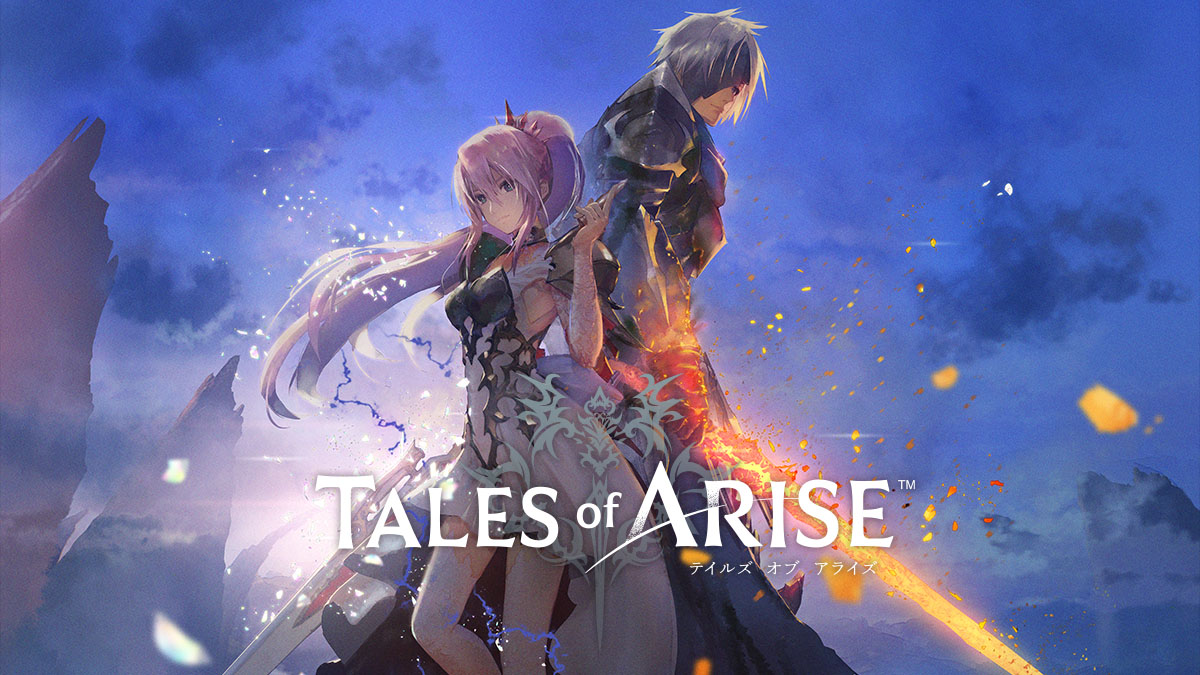
Tales of Arise, the newest installment in the celebrated RPG series, Tales, was released on September 2021 for PlayStation 4 (*1), PlayStation 5 (*2), Xbox Series X|S (*3), Xbox One (*4), and STEAM (*5). Our thirteenth development episode sheds light on the new title, whose theme is inheritance and evolution, and how it satisfies core fans while simultaneously reaching out to new demographics.
Participants were interviewed in an online discussion over Zoom. (Held January 2022.)
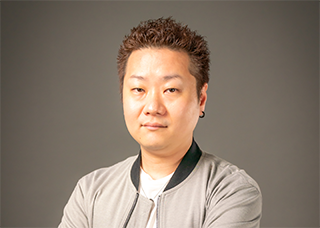
- Yoshimasa Tanaka
- Development Producer
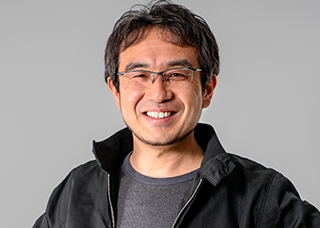
- Shuji Ikegami
- Next-Gen Release and Development Producer

- Hirokazu Kagawa
- DirectorMinoru Iwamoto

- Minoru Iwamoto
- Art Director, Character Designe
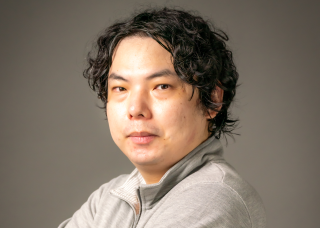
- Hiroyuki Kobayashi
- Graphics Programmer

- Moeka Oshiyama
- Project Manager
Changes Affected by a Delay to Release and Next-gen Console Support
■Tanaka: I’d like to take a retrospective look at the development of Tales of Arise. This title was developed over a fairly long period of time; when I joined as Development Producer its pieces were finished but it wasn’t a complete RPG, and I honestly remember feeling that there were more than a few points that needed improvement. Ikegami-san and Oshiyama-san joined the project at the same time, and I remember talking with them about what it is we needed to do to finish the game.
●Oshiyama: You’re right. As everyone knows, the original plan was to have the game come out in 2020, but a variety of factors led to it being released in September 2021.
■Tanaka: 2020 contained another major turning point: the decision to support the Xbox Series X|S and PlayStation 5, which I think was important in the development of Tales of Arise. While this was going on, we were also tuning up the game over the course of about a year. I personally think that year was crucial for the game.
This was a large-scale title, and we weren’t always clear when we would be able to release it even in our internal conversations.
●Ikegami: It was at this point that I joined, and it did feel like the deciding factor for the release date was the work we did in the next-gen development team. Current-gen development was handled in Bandai Namco Studios, and next-gen by part of our staff and YUKE’S. I often told everyone else that we don’t want to make them change the release date because of some fault on our side.
●Kagawa: All of the members of the current-gen version worked at maximum horsepower until the decision was made to delay release. Considering the situation, I think it would have been impossible to develop the next-gen version in parallel. So, we formed a separate team to handle the next-gen version and things cooled down in a sense.
We didn’t just tell the next-gen team to handle development on their own; the current-gen team kept an eye on things like next-generation graphical improvements. That led to discussions about ways we could make the current-generation game even better, and we ended up tweaking a lot of different parts. All of these discussions led to a lot of overarching improvements.
■Tanaka: That being said, release delays unavoidably damper the entire team’s mood. So, I tried to stay resolute and broke the news in a way that would maintain the team’s spirits, since naturally I want the team to be happy while they’re developing the title.
●Kagawa: I felt that as well. I became Director partway through the project, but at that point we were giving the final push to finalize the game for release. The game was already fairly polished, and no matter how much go even further, we only had so much time and needed to aim for completion. So as Director I felt that I had to draw the line on how much we would absolutely be able to make. But the Producers felt that fans wouldn’t be happy with the game’s current quality, and as a member of the development team I well understood that sentiment. That led to a lot of back-and-forth, and especially in 2019 I felt that every member of the team was working at maximum horsepower.
■Tanaka: I think it’s really because of Kagawa-san and his team that the game turned out as well as it did.
●Kagawa: Even when things got hard, everyone dug in their heels and put in work to make Tales of Arise a better title. I hate to say it’s thanks to everyone’s hard work, but I am glad that we were able to continuously polish the title until the end.
The Meticulously Crafted Atmospheric Shader
■Tanaka: Tales of Arise uses the Atmospheric Shader to create unique, painterly graphics. What’s the story behind the birth of this technology?
●Kobayashi: This title set “inheritance and evolution” as its theme. This was decided during the early stages of development as a way to verbalize our goals: inheriting Tales Of’s good aspects while also breaking new ground as a new entry in the series.
We took the same approach with the title’s graphics and aimed to create our own visual style by using unique rendering technology like the Atmospheric Shader.
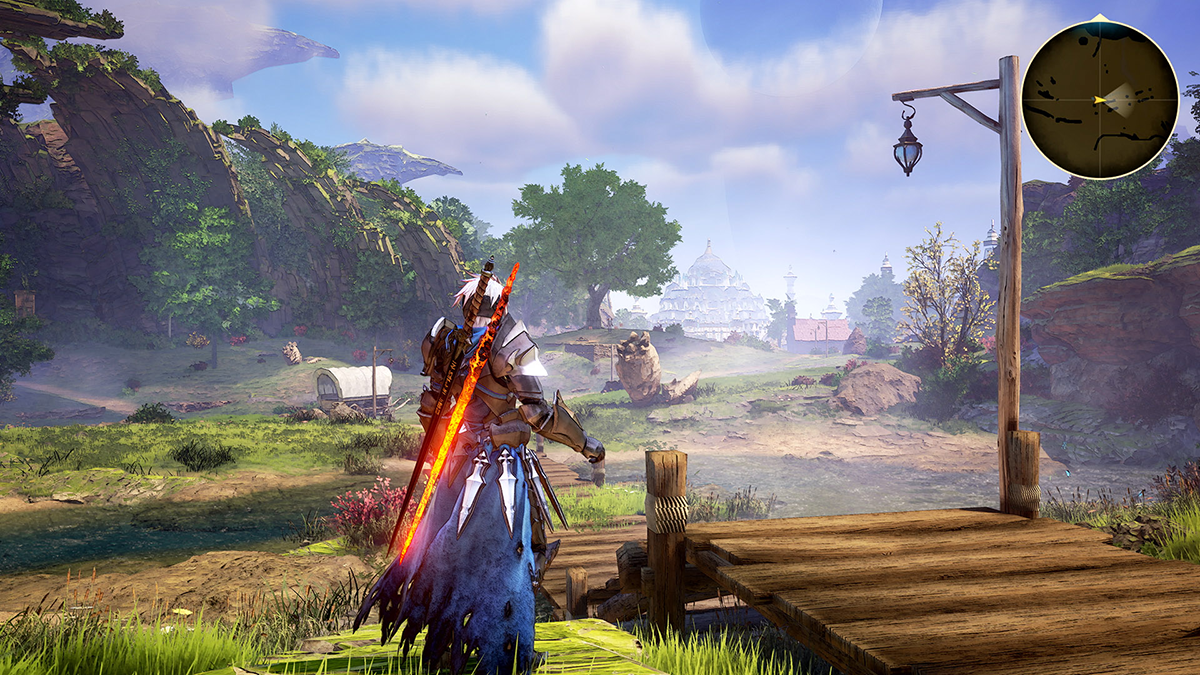 Tales of Arise™ & ©Bandai Namco Entertainment Inc.
Tales of Arise™ & ©Bandai Namco Entertainment Inc.
●Iwamoto: I worked with Kobayashi-san on a variety of graphical styles starting around 2015, and we settled on the current one in 2016. I think that using an illustrated look while keeping realistic parts realistic is the epitome of our attempt at “inheritance and evolution”.
●Kobayashi: We only had the groundwork laid out when we decided on the title’s visual style and had to polish what we had while borrowing from a lot of different methods.
●Iwamoto: Actually, the very earliest visual style was lively, fun, and poppy. While we were aiming for an “illustrated” look, that term encompasses all sorts of other styles. We started by asking ourselves what it would look like to use current technology to depict the Tales series’ warmth, or the good aspects of 2D graphics. After trying out creating a variety of styles, we decided on to use a watercolor style with the Atmospheric Shader.
■Tanaka: Iwamoto-san also supervised character design in this title. This was the first time Bandai Namco Studios’ staff supervised all of a title’s character designs. Did you feel pressure when you were in that position?
●Iwamoto: The pressure was intense, to say the least… But as a developer I also play the role of Art Director, and I resolved to come up with characters that are as compelling as possible by utilizing the game world and everything that Kobayashi-san created. So I would take Kobayashi-san’s ideas, for example about specific looks for metal parts or ways to use cloth, and implement them in my designs.
I reflected Tales of Arise’s potential in the character designs, and was able to do because I was a part of development. Kobayashi-san, what things gave you trouble when you worked on visual looks?
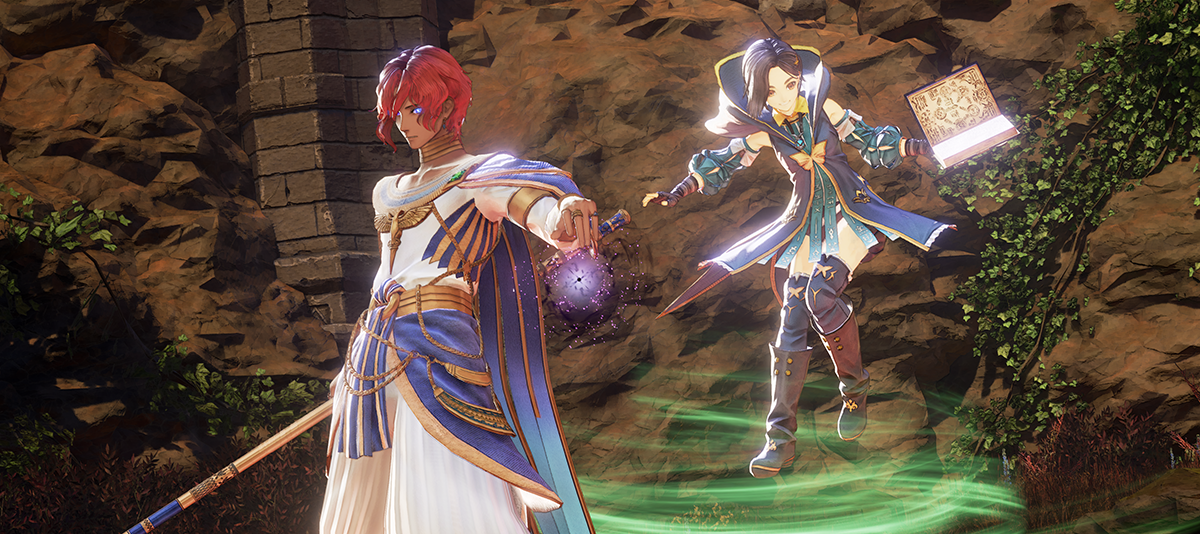 Tales of Arise™ & ©Bandai Namco Entertainment Inc.
Tales of Arise™ & ©Bandai Namco Entertainment Inc.
●Kobayashi: We used Unreal(R) Engine(*6)as this title’s game engine. It’s a fabulous engine with a lot of great aspects. That being said, of course I ran into problems, and figuring out how to overcome them was grueling at times. For example, current-gen and next-gen versions of the game each use different versions of the engine. That means what we create needs to work properly on both versions. One other thing was the multi-platform simultaneous release. Since you often run into situations where things work fine on PC, but don’t go as expected on console.
●Ikegami: I think there’s no way we could have pulled this off without Kobayashi-san. There’s a gap of five engine versions between the current-gen and next-gen versions. Five versions may not be an intuitive way to describe the difference, but it means the newest version is way in the future. Having to progress through development while accounting for that gap is very, very tough. It’s also the main reason that we got YUKE’S to help us. When we explained our dilemma, they actually said that they’re very capable of helping out. By the way, the Atmospheric Shader is still evolving as we speak, isn’t it?
●Kobayashi: Yes. We’re still doing research for the next Tales Of installment; we’re working on ways to take the characters’ visuals to the next level.
■Tanaka: In other words, both of you are exploring the ways you could have made this title’s visuals even better.
Meticulously Crafted Action-heavy Combat
■Tanaka: One of this title’s unique features is its action-heavy combat. Kagawa-san, your original role in development was Battle Planner, wasn’t it?
●Kagawa: It was. I joined the project during early development as a Planner for the battle systems and began working as Director in the latter half. My goal was to create battles that would mark a new generation in the Tales Of series. I put an emphasis on intuitiveness in the battle systems and aimed to make simple inputs result in actions that feel exhilarating. I wanted to do this because I felt that the battle systems in Tales Of games became more complicated as the series progressed. So I wanted to simplify them and make them more intuitive.
■Tanaka: What specific parts did you want to change?
●Kagawa: For example, making enemies’ appearances communicate their weaknesses. And after doing so, making their weak points easy to target during combat. I also put a lot of weight on how to string together individual moves. Also, assuring that properly reacting to the enemy’s attacks will make your party’s attacks more likely to hit.
 Tales of Arise™ & ©Bandai Namco Entertainment Inc.
Tales of Arise™ & ©Bandai Namco Entertainment Inc.
●Iwamoto: We talked about wanting to pose a challenge in designing the new Tales title by making the game’s first boss fight as climactic as past title’s last bosses. I think Kagawa-san interpreted that sentiment by making the first major boss fight, Balseph, way over the top.
●Kagawa: Another goal was to make enemies more menacing, so we tried making bosses extra large from the very beginning. Balseph is a good example; I think we were able to make a very menacing enemy and a fight that’s gripping in that you feel like you’re suddenly thrown into a last boss fight.
But speaking honestly, I didn’t expect to spend entire months on completing individual bosses. That’s one point I think we should learn from. But the bosses ended up that much more demanding because of it, and I think players felt just how menacing this game’s bosses are.
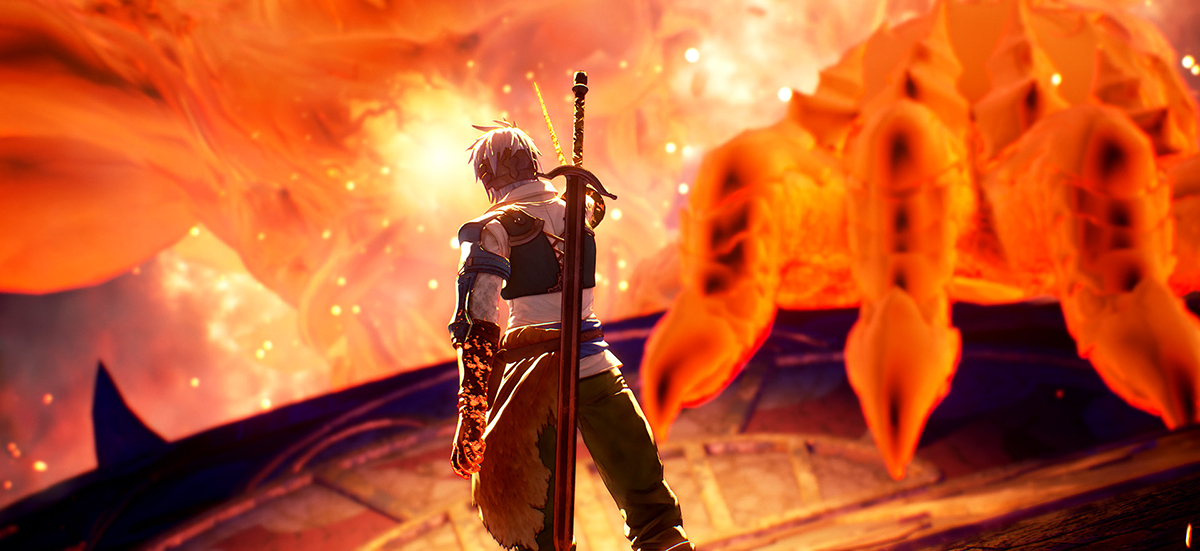 Tales of Arise™ & ©Bandai Namco Entertainment Inc.
Tales of Arise™ & ©Bandai Namco Entertainment Inc.
■Tanaka: You said you put emphasis on making battles feel exhilarating, but what specifically did you pay attention to?
●Kagawa: We made battles more exhilarating by refining the visuals for destruction. We added a lot of really over-the-top elements when a boss’s attack destroys a building, for example. I would have liked to use the type of destruction you see in shonen manga, like making player attacks dig chunks out of the ground, but unfortunately we had to abandon them because of schedule and technical issues.
■Tanaka: I see. In other words, combining everything you mentioned created the title’s action-heavy battles.
●Kagawa: It did. I think we were able to pull it all off because we emphasized intuitiveness. It’s also because staff members refined the battles to make them feel as good as possible. Originally, all characters were able to block and dodge. However, they were unable to move while blocking because the action caused them to stop in place, which made it difficult to create moments that felt exhilarating. So we changed the battles to be evasion-centric. I think all of these various changes helped make battles more action-heavy.
■Tanaka: Now that you mention it, the only character that can block is Kisara. That decision also gave more personality to the party members.
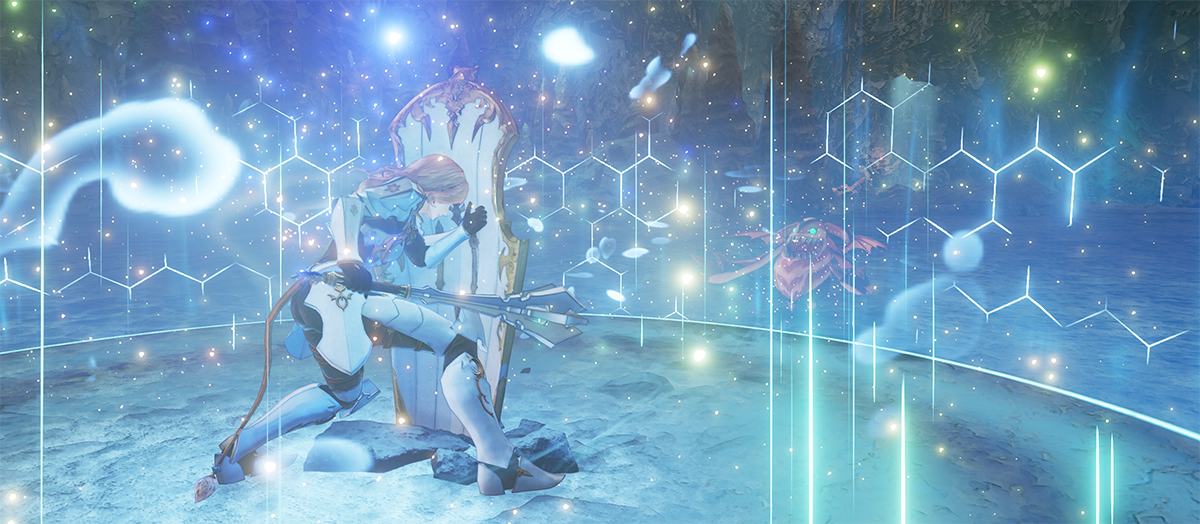 Tales of Arise™ & ©Bandai Namco Entertainment Inc.
Tales of Arise™ & ©Bandai Namco Entertainment Inc.
●Kagawa: We decided in early development to properly distribute party members’ roles. We wanted to make the game feel like an RPG by making use of each character’s personality in their combat instead making everyone capable of doing anything.
The most obvious example is Kisara, who carries a giant shield and whose role is literally to shield the party. Kisara comes to life as the party’s shield precisely because each other character has their own role. We decided to bring out characters’ unique points through choices like this.
■Tanaka: Looking as an outsider, it seems like balancing the game must have been tough.
●Kagawa: We balanced the game by having the entire staff play the game and debate about what changes to make. The battles in this title are fairly meaty, and we balanced them to ramp up slowly but surely. We were able to give this title the appeal that it has by exchanging opinions as a team.
Official websites:
https://toarise.tales-ch.jp/
Publisher: Bandai Namco Entertainment Inc.
*The names of companies and products mentioned herein are trademarks or registered trademarks of their respective owners.
(*1, *2) “PlayStation” is a registered trademark or a trademark of Sony Interactive Entertainment Inc.
(*3, *4) Xbox Series X|S and Xbox One are trademarks or registered trademarks of Microsoft Corporation in the United States and its associated companies.
(*5) ©2021 Valve Corporation. Steam and the Steam logo are trademarks or registered trademarks of Valve Corporation in the United States and/or other countries.
“Tales of Arise”
Tales of Arise™ & ©Bandai Namco Entertainment Inc.





